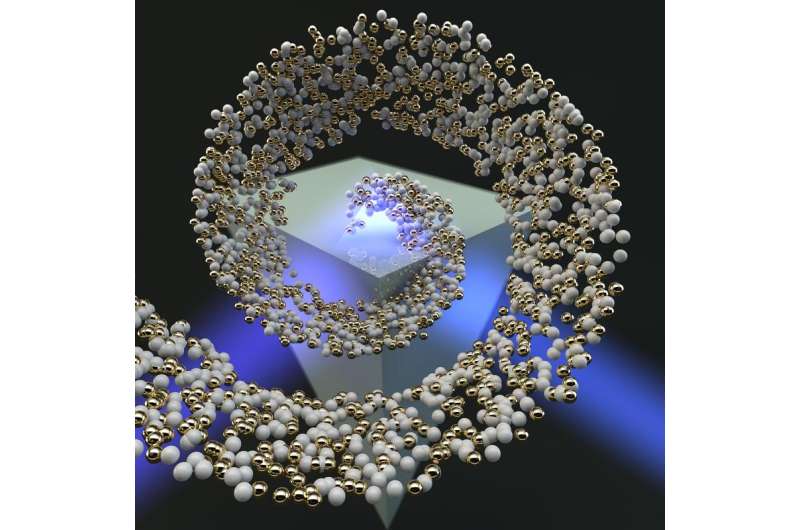Spinning light waves might be 'locked' for photonics technologies

A newly described property related to the "spin" and momentum of light waves suggests potential practical applications in photonic communications and photonic circuits.
Scientists already knew that light waves have an electric field that can rotate as they propagate, which is known as the polarization property of light, and that light waves carry momentum in their direction of motion. In new findings, researchers have discovered a "spin-momentum locking," meaning, for example, light waves that spin in a counterclockwise direction can only move forward, and vice versa.
"Researchers had noticed intriguing effects related to directional propagation of light coupled to its polarization," said Zubin Jacob, an assistant professor of electrical and computer engineering at Purdue University. "What we have shown is that this is a unique effect related to the spin and momentum of light analogous in many ways to the case of spin-momentum locking which occurs for electrons. We showed there is a very simple rule that governs this spin and momentum locking. And it's a universal property for all optical materials and nanostructures, which makes it potentially very useful for photonic devices. This universality is unique to light and does not occur for electrons."
Findings were detailed in a research paper that appeared in February in the journal Optica, published by the The Optical Society. The paper was authored by graduate student Todd Van Mechelen and Jacob, who demonstrated spin-momentum locking through analytical theory.
Spin-momentum locking might be applied to spin photonics, which could hypothetically harness the spin of photons in devices and circuits. Whereas microchips use electrons to perform computations and process information, photons are limited primarily to communications, transmitting data over optical fiber. However, using the spin of light waves could make possible devices that integrate electrons and photons to perform logic and memory operations.
"Lots of researchers in the field of electronics think future devices will utilize not only the charge of the electron but also the spin of the electron, a field called spintronics," Jacob said. "The question is how to interface photonics and spintronics. We would have to use some of these spin properties of light to interface with spintronics so that we might use both photons and electrons in devices."
The researchers learned that spin-momentum locking is inevitable when light waves decay.
"If you transmit light along an optical fiber, most of the light is confined within the fiber but a small portion falls outside of the fiber, and this we refer to as the decaying evanescent light wave," Jacob said. "What we showed was that these evanescent waves are the fundamental reason spin-momentum locking is ubiquitous in practical scenarios."
The work is ongoing and may include experiments using a levitating nanoparticle to study the spin-momentum properties of light.
More information: Universal spin-momentum locking of evanescent waves. arxiv.org/abs/1504.06361
Journal information: Optica
Provided by Purdue University





















